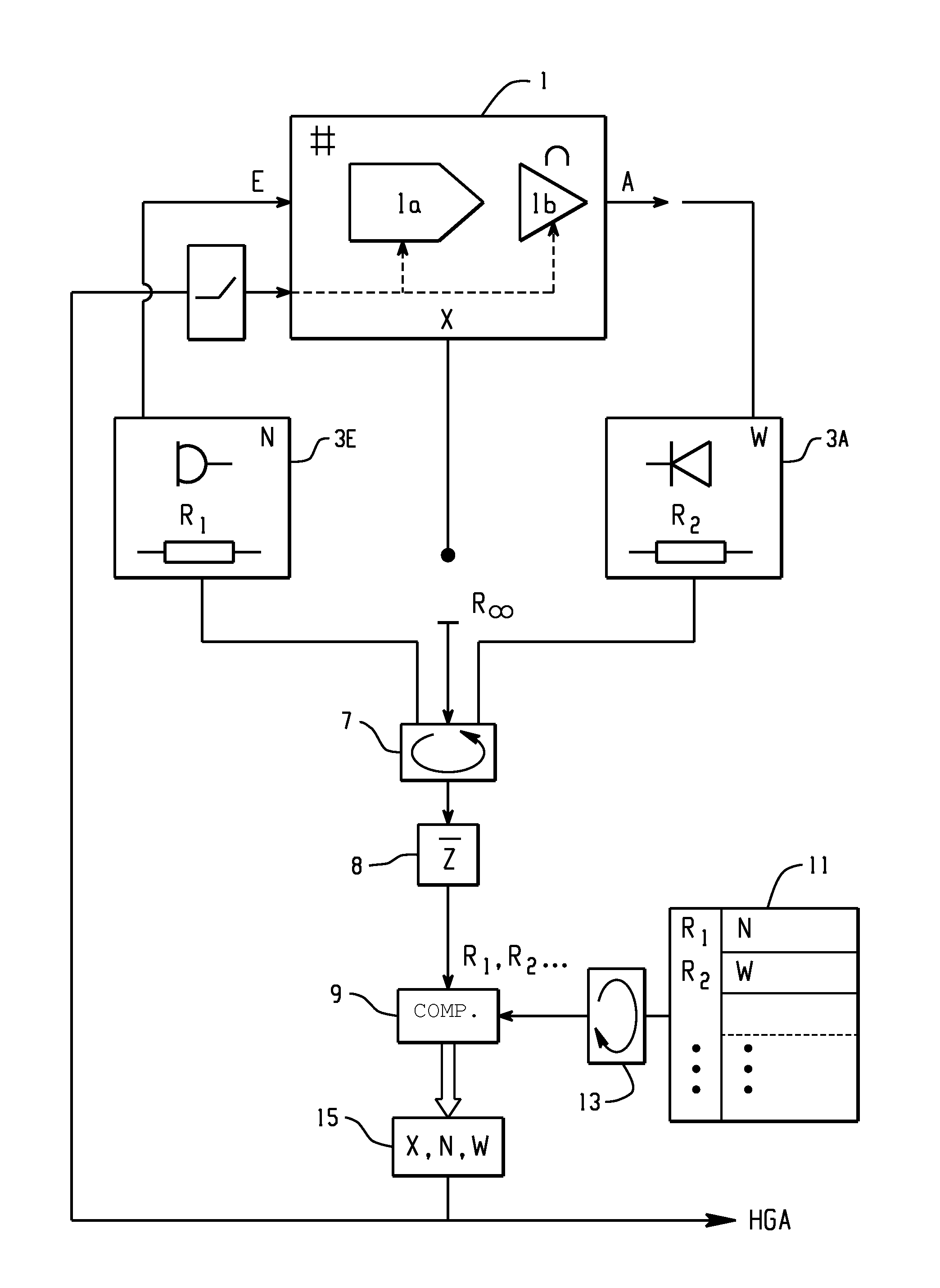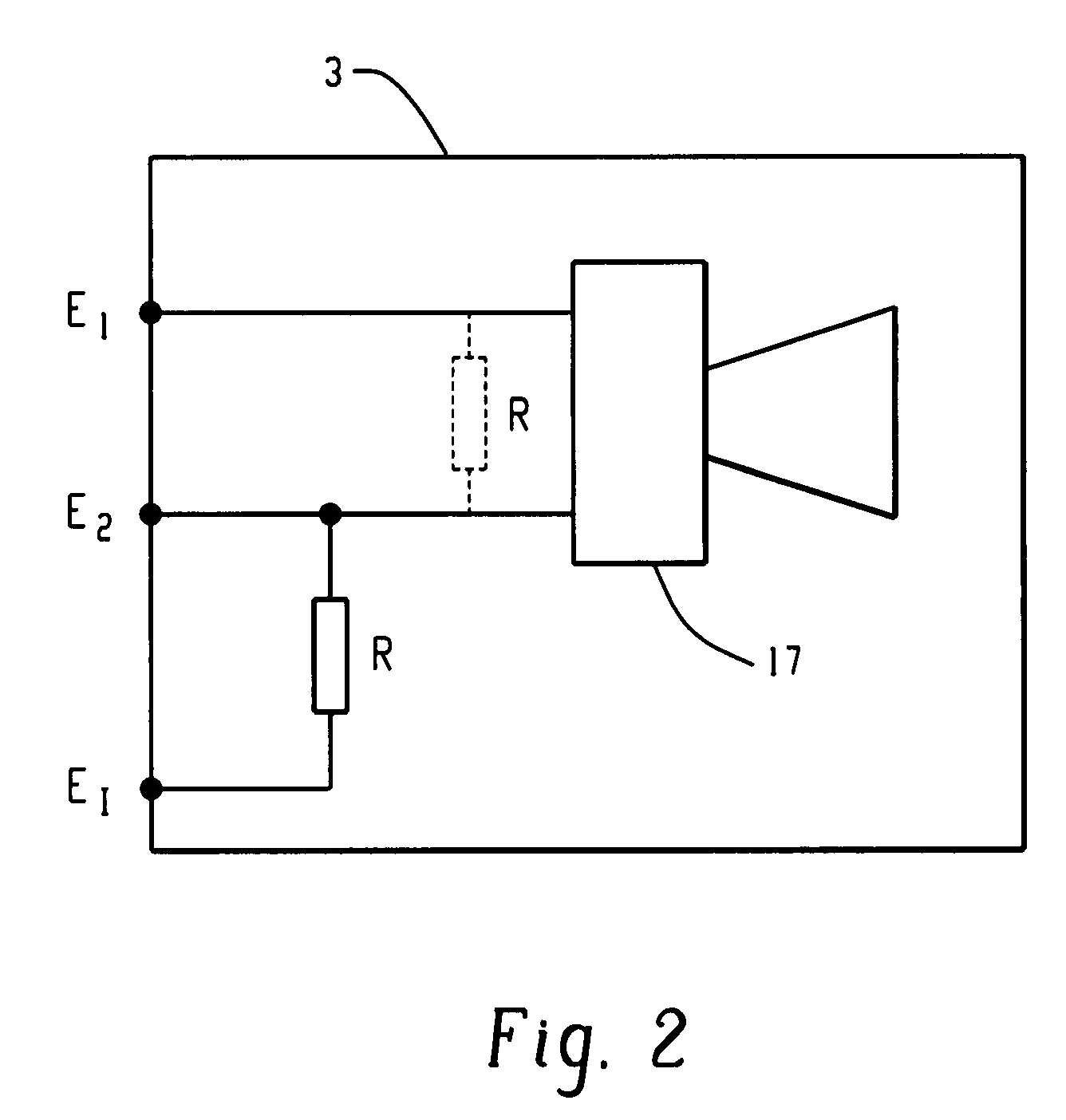Resistance-based identification
a technology of resistance and identification, applied in the field of hearing aids, can solve the problems of extreme cost-intensive, and achieve the effect of simple and cost-effective implementation
- Summary
- Abstract
- Description
- Claims
- Application Information
AI Technical Summary
Benefits of technology
Problems solved by technology
Method used
Image
Examples
Embodiment Construction
[0027]In the form of a signal-flow / functional block diagram, FIG. 1 depicts a hearing aid according to the invention, encompassing, as an example, two peripheral devices 3E and 3A, configured according to the invention. A signal processing unit 1, performing digital and / or analog signal processing and represented by the DSP / digital signal processing unit 1a and the amplifier 1b, is provided with input and output connections. The output of the peripheral device 3E connects to the input E of the signal processing unit 1, one output A of the signal processing unit 1 connects to the input of the peripheral device 3A. The peripheral devices whose inputs and / or outputs functionally connect to the outputs and / or inputs of the signal processing unit 1, may be sensor devices such as microphones, general electro-acoustic converters, communications components such as transceivers, control elements such as program switches, volume controls, actuators, electro-mechanical output converters such a...
PUM
 Login to View More
Login to View More Abstract
Description
Claims
Application Information
 Login to View More
Login to View More - R&D
- Intellectual Property
- Life Sciences
- Materials
- Tech Scout
- Unparalleled Data Quality
- Higher Quality Content
- 60% Fewer Hallucinations
Browse by: Latest US Patents, China's latest patents, Technical Efficacy Thesaurus, Application Domain, Technology Topic, Popular Technical Reports.
© 2025 PatSnap. All rights reserved.Legal|Privacy policy|Modern Slavery Act Transparency Statement|Sitemap|About US| Contact US: help@patsnap.com



